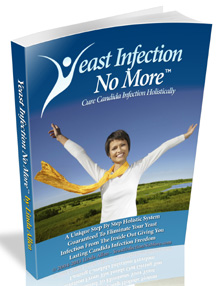Are You Suffering From Skin Yeast Infections?
Free Video Reveals 1 Weird Tip To Quickly Cure Your Candida Overgrowth & Enjoy Permanent Freedom From Yeast Infections In As Little As 12 Hours - Guaranteed!
>> Yeast Infection Guaranteed Treatment Click Here <<
The most common type of yeast infection is probably the vaginal yeast infection. But you should be aware that there is other type of yeast infections that can affect various individuals. Some of these infections include male yeast infection or penile yeast infection, but the one we are concern about here is the skin yeast infections.
All these types of infections are usually transferred by simple contact. Of course yeast infections like vaginal or penile yeast infections are usually transferred through sexual relations but for other types of yeast infections like the skin yeast infection, the infection are transmitted in a different way.
Of course skin infection cannot be contracted through sexual intercourse. The most common way to contract skin yeast infection is to come into contact with an infected person. The chances that the infection can be passed on are very good.
Another way to contract skin yeast infections would be to use an infected person towel. So if you are infected just make sure you keep your towels separated from other until you are cured.
As you can imagine the same goes for your clothing. Even you?re infection as been cured you should continue for a while to separate your clothing and your towel from others.
One thing you could do, although it?s old fashioned, is to soak your cloths and your towels in boiling water, this will make sure to destroy all the signs of skin yeast infections.
Small Tip: When suffering from skin yeast infections, it is a very goods idea to pat yourself dry instead of rubbing, especially the places where you are infected. This will help you greatly with your rash and irritation as it will keep the abrasion of the towel to a minimum. This is a great tip to contain the pain.
Unfortunately there are still no over the counter medicine for skin yeast infection. To find the best skin yeast infections treatments the best thing would be to consult your doctor. He?s probably the best person to tell you what the best options for you are. The treatments should be for the most part prescription medications.
Of course they are other natural treatment that can help you greatly with skin yeast infections, treatment like herbal teas or oils but you should make sure with your doctor that those natural treatments do not interfere in any way with your prescription medication.
Of course skin yeast infections are quite easy to diagnose, but once again I would advice you to consider seeing a specialist this would make sure you are getting the appropriate treatment.
This articles was written to give you a summary of skin yeast infections and help you understand it a little bit more. If you are currently suffering from this condition and would like to find the best yeast infection cure, visit our website, we offer various information about yeast infection and we offer the best yeast infection treatment available online.
Labels: breast_yeast_infection, herbal_remedy_for_yeast_infection, male_yeast_infection, oral_yeast_infection, pregnant_yeast_infection

